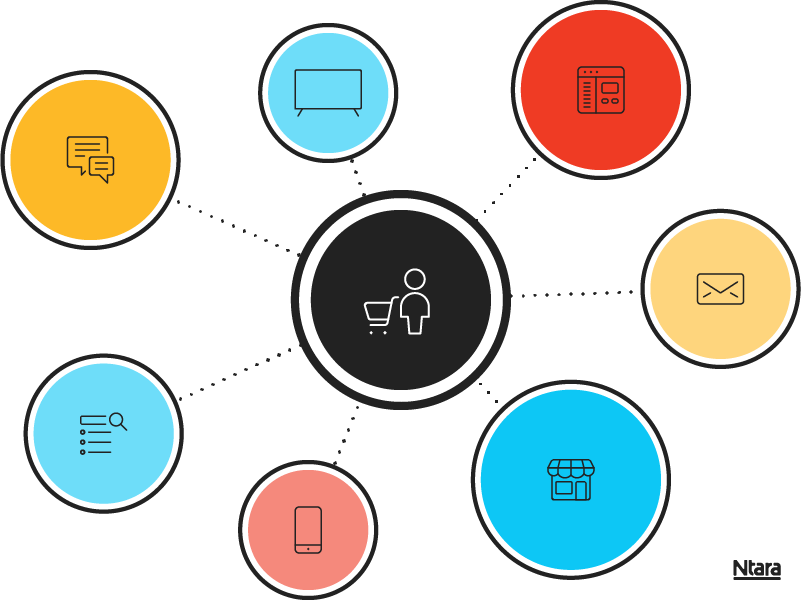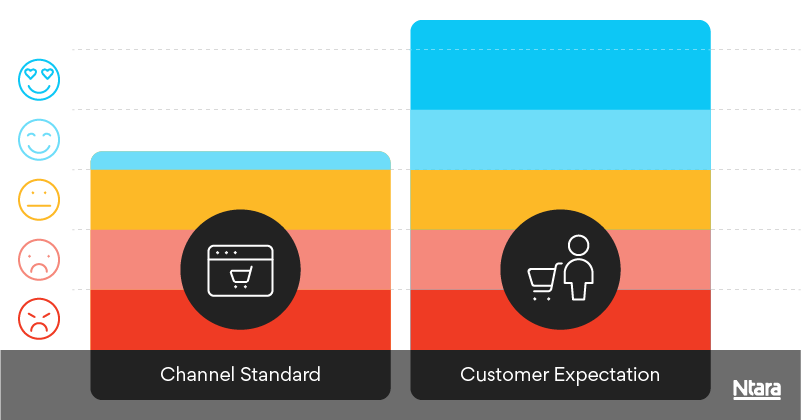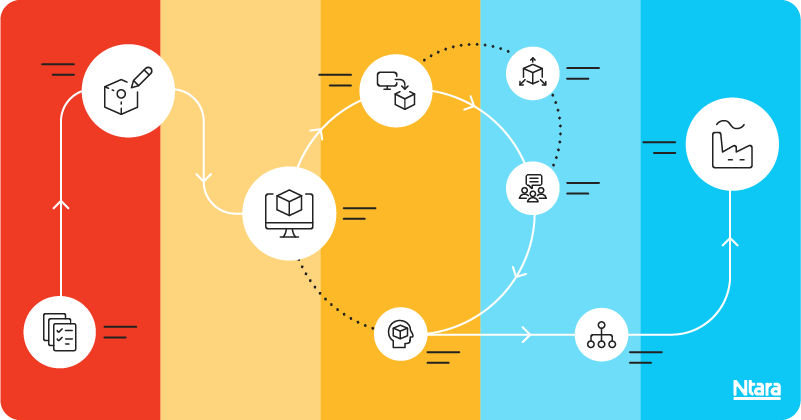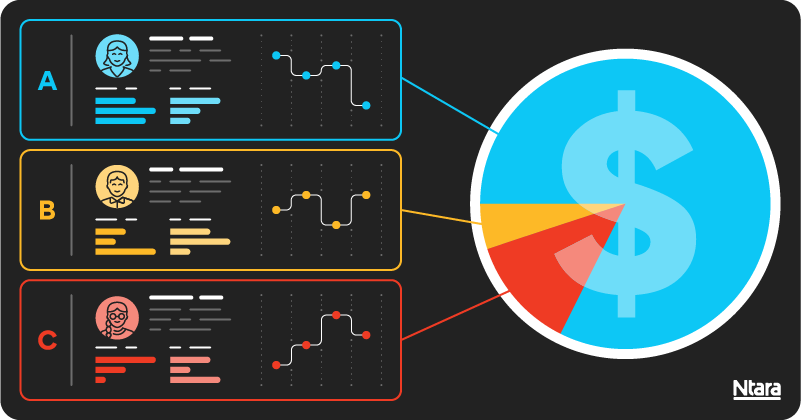B2B omnichannel is evolving fast. Selling products on different channels is no longer enough, especially when selling to tech-savvy buyers. Ready or not, digital natives are forcing manufacturers, brands, and distributors to redefine the rules and adopt a more “customer-centric” approach.

The force of B2B disruption
We’ve all heard about millennial preferences disrupting B2B, but even that’s old news. By 2025, Gen Z will comprise 27% of the workforce. And they have zero patience to pick up the phone or wait to be persuaded by a sales associate.
An article by the Harvard Business Review (HBR) notes that buyers are also very comfortable switching to a new brand or supplier. For example, 82% of B2B decision-makers will actively seek a new supplier if a performance guarantee is not offered.
All this disruption drives a shift to a customer-centric omnichannel strategy — i.e., going beyond channel consistency to put the customer at the center of every interaction.
The good news? This evolution brings significant opportunity. HBR notes that players who get it right will “not only attract new customers but retain existing ones, leading to higher revenues, lower cost to serve, improved customer satisfaction scores, and reduced churn rates.”
So, what’s involved in adopting customer-centric B2B omnichannel? The following three steps are a great place to start.
1: Don’t let the channel set your standard
Here’s a hard truth: You can’t deliver a customer-centric experience if you let the channel set your brand’s standard. This is true even if you market exclusively through dealers.
Consider that 60% of buyers do more than a quarter of their purchasing on Amazon Business, and 28% say they do more than half. As purchasing shifts to marketplaces, loyalty becomes more fragile. And that makes establishing a stronger brand image and promise more critical than ever.
Yet for manufacturers and distributors—who often feel controlled by their channel or big box giants—it’s not an easy challenge to solve. Meeting the channel’s minimum standard is often quite different from meeting the end user’s standard. This can be so burdensome that it becomes the primary focus at the end user’s expense.

Fewer brands will prioritize exceeding the standard, which presents a tremendous opportunity for those who bring products to market with trusted product data and compelling content (e.g., images and videos) that help customers make the best buying decisions.
After conducting scores of studies for mid-market and enterprise manufacturers and distributors, we can confidently say that the “feeling” of being controlled by the channel is often quite different from reality.
Time and time again, primary research shows that buyers want an omnichannel experience that eclipses the minimum standards set by the channel.
The manufacturer or distributor is viewed as the highest source of authority on product data. So, allowing your channel to fully control the experience and expectations of buyers is often a comfortable—but simply wrong—way to see today’s world.
2: Define and deliver a product story that resonates with your buyers
Setting your own standard is crucial. It begins with internal alignment around what makes your products and brand stand out from the competition.
We saw this in action during a PIM discovery and analysis project with a major apparel brand. Our consultants asked their team to walk us through their product journey from concept, sourcing, merchandising, sales, and recycling.

Despite being a large and successful company, their marketers had never heard the captivating story behind sourcing certain materials—like highlands wool and natural rubber—from exotic locations. This revelation highlighted an opportunity for the team to break down silos and collaborate to craft a product story that connects deeply with their customers.
With so many tasks in motion, it can be hard to look back and evaluate the product story as if you’ve never heard it before. Yet articulating what sets your products apart is key to creating the authentic brand and purchase experience your customers expect.
To be fair, this sounds like—and is, in fact—product marketing 101. However, losing the “forest for the trees” is one of the most consistent issues we see and solve. In most instances, it’s due to our clients being more focused on fulfilling one-off data requests for their channel as opposed to the big picture and buyer experience.
3: Cultivate organizational alignment around the importance of marketing
To become a product- and marketing-centric organization, you’ll need top-down support. One effective way to get everyone on the same page is to gain a deeper understanding of your customers through analytics and data.
Determine where your customers prefer to make purchases, where they seek product information, and where they look for inspiration. These channels often differ (e.g., Amazon, retail sites, your ecommerce website) and require unique data, content, and marketing strategies.
This is where research can lead to significant gains. When you present statistically significant data showing that a particular category or channel is responsible for a substantial portion of your revenue, you can convince even the most skeptical stakeholder to embrace the necessary changes.

Customer segmentation research can reveal the channels that need attention and uncover opportunities to increase sales and improve service. This research is a critical part of the process—especially with omnichannel, where preferences are constantly changing.
Hard data about end-user preferences is also the most effective tool you have to help drive a change in perspective about your channel controlling the buyer experience. Oftentimes, a one-off story about a particularly vocal channel can shape an organization’s entire channel strategy, when data should be leading the way.
Being customer-centric must start with listening to your end customers.
Are you ready for a fresh approach to B2B omnichannel?
From understanding your evolving customer to defining and owning your product data and content standards, Ntara is here to help. Get in touch if you’d like to learn more.